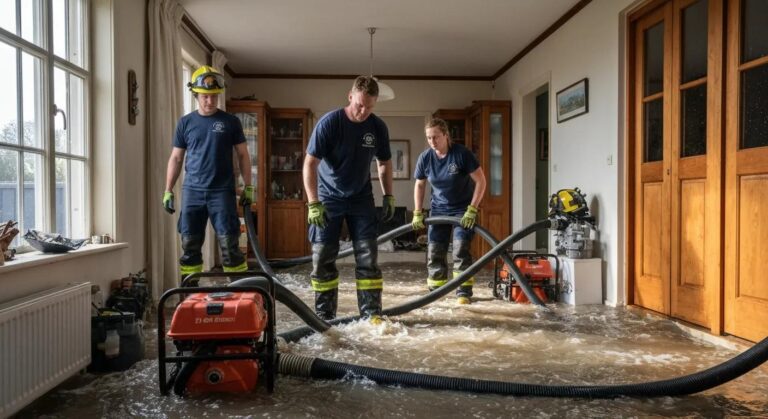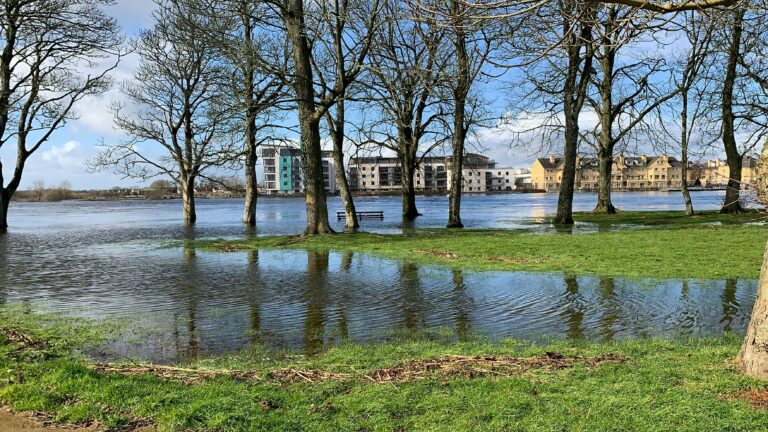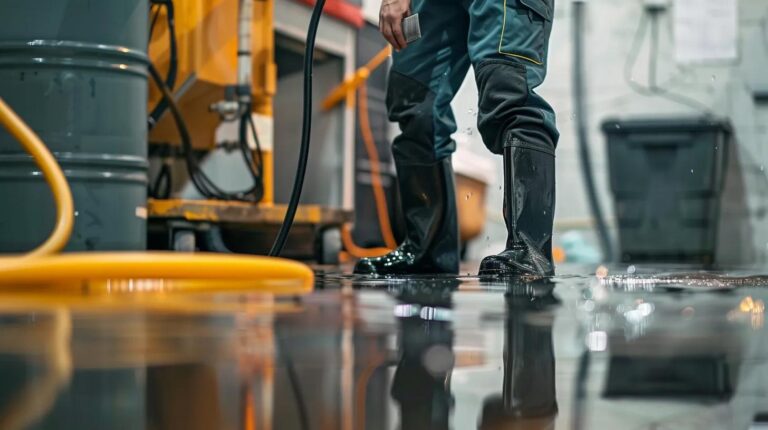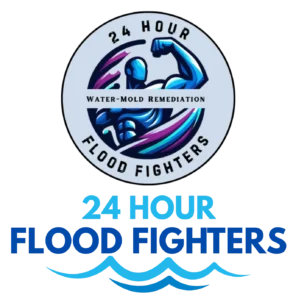Understanding Flood Damage
Flood damage can severely impact homes and properties, causing both immediate and long-term issues. Understanding the types of damage that can occur is crucial for effective recovery. Water can compromise structural integrity, create hazardous environments, and lead to mold growth if not addressed promptly.
For instance, standing water can damage flooring, walls, and electrical systems, while moisture can seep into hidden areas, leading to mold infestations. It's essential for property owners to assess the extent of the damage and take appropriate action to minimize further complications.
Immediate Steps After a Flood
After a flooding event, taking immediate action is vital to mitigate damage and ensure safety. The first step is to ensure that the area is safe to enter; this includes checking for structural damage and potential electrical hazards. Once it is safe, homeowners should begin to remove standing water and start drying out the affected areas.
Using pumps and wet vacuums can help remove excess water, while fans and dehumidifiers can assist in drying out surfaces. It's also advisable to document the damage for insurance claims and to consult with professionals to evaluate the situation thoroughly.
Cleaning and Sanitizing Your Home
Once the water has been removed, the next crucial step is cleaning and sanitizing the affected areas. This process helps eliminate contaminants and prevent mold growth. It's important to use appropriate cleaning solutions that can effectively kill bacteria and other pathogens that may be present in floodwater.
For example, non-porous surfaces should be scrubbed with a mixture of water and detergent, followed by a disinfectant. Carpets and upholstery may need to be discarded if they are severely contaminated, while hard surfaces can often be salvaged with proper cleaning techniques.
Preventing Future Flood Damage
To safeguard your property against future flooding, implementing preventive measures is essential. This may involve assessing your landscape for drainage issues, installing sump pumps, or even elevating electrical systems to reduce risk. Additionally, creating a flood emergency plan can prepare homeowners for potential future events.
For example, ensuring that gutters and downspouts are clear and directing water away from the foundation can significantly reduce the risk of flooding. Regular maintenance and inspections can help identify vulnerabilities in your property before they become significant issues.
Understanding Flood Damage
Flood damage can severely impact homes and properties, causing both immediate and long-term issues. Understanding the types of damage that can occur is crucial for effective recovery. Water can compromise structural integrity, create hazardous environments, and lead to mold growth if not addressed promptly.
For instance, standing water can damage flooring, walls, and electrical systems, while moisture can seep into hidden areas, leading to mold infestations. It's essential for property owners to assess the extent of the damage and take appropriate action to minimize further complications.
Immediate Steps After a Flood
After a flooding event, taking immediate action is vital to mitigate damage and ensure safety. The first step is to ensure that the area is safe to enter; this includes checking for structural damage and potential electrical hazards. Once it is safe, homeowners should begin to remove standing water and start drying out the affected areas.
Using pumps and wet vacuums can help remove excess water, while fans and dehumidifiers can assist in drying out surfaces. It's also advisable to document the damage for insurance claims and to consult with professionals to evaluate the situation thoroughly.
Cleaning and Sanitizing Your Home
Once the water has been removed, the next crucial step is cleaning and sanitizing the affected areas. This process helps eliminate contaminants and prevent mold growth. It's important to use appropriate cleaning solutions that can effectively kill bacteria and other pathogens that may be present in floodwater.
For example, non-porous surfaces should be scrubbed with a mixture of water and detergent, followed by a disinfectant. Carpets and upholstery may need to be discarded if they are severely contaminated, while hard surfaces can often be salvaged with proper cleaning techniques.
Preventing Future Flood Damage
To safeguard your property against future flooding, implementing preventive measures is essential. This may involve assessing your landscape for drainage issues, installing sump pumps, or even elevating electrical systems to reduce risk. Additionally, creating a flood emergency plan can prepare homeowners for potential future events.
For example, ensuring that gutters and downspouts are clear and directing water away from the foundation can significantly reduce the risk of flooding. Regular maintenance and inspections can help identify vulnerabilities in your property before they become significant issues.






